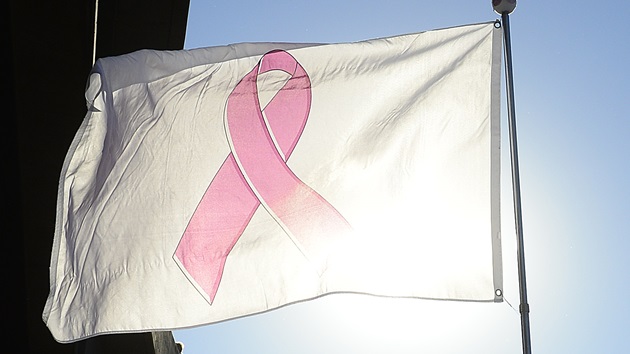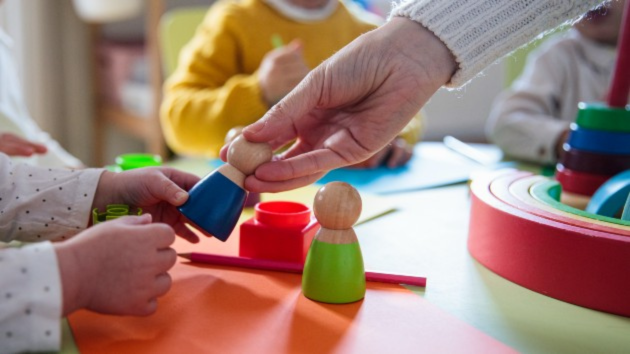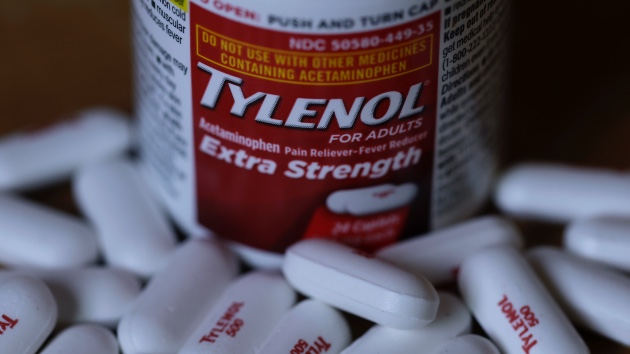Boy, 12, describes four-year battle with ‘invisible’ disease of long COVID
Written by ABC Audio ALL RIGHTS RESERVED on April 10, 2024

(NEW YORK) — Theo Huot de Saint-Albin was a 9-year-old elementary school student when he first contracted COVID-19 in July 2020, near the start of the coronavirus pandemic.
Four years later, as much of the world has moved on from the pandemic and resumed normal life, Theo, now nearly a teenager, is still battling the effects of long COVID.
“What happened directly after COVID-19 was worse than my actual COVID-19,” Theo, now in seventh grade, told ABC News’ Good Morning America. “For me, I have chronic migraines … it doesn’t mean the migraine is terrible every day. It’s very unpredictable. It goes in waves. But it’s always there. It never leaves.”
Over the past four years, Theo has contracted COVID-19 a total of three times, and each case has been mild. It’s what happens in the weeks and months after the COVID-19 diagnosis that he says has impacted his ability to learn, go to school and play with friends.
In addition to battling chronic migraines, Theo was also diagnosed with postural orthostatic tachycardia syndrome, or POTS, a blood circulation disorder that can cause dizziness, lightheadedness and a rapid heartbeat, according to the U.S. National Institute of Neurological Disorders and Stroke.
He said he also suffers from symptoms like muscle pain, extreme fatigue and brain fog, and takes around two dozen medications and supplements each day to help manage his symptoms.
“There’s no real way to tell how I’m going to feel,” Theo said, noting that some days he is able to go to school for only a half-day, while other days he feels closer to his pre-COVID-19 self, and still others he can’t move beyond the couch all day.
“It’s especially hard because it’s ‘invisible,'” Theo said of his long COVID diagnosis. “Sometimes it’s hard to get people to believe you as well because they can empathize with something they know is there. ‘Oh, you have a broken leg, I can see that. Wow, you can’t walk. That must be tough.’ But, your head hurts? ‘I don’t see a big bulge on your head. I don’t see bandages wrapped around it.'”
An ‘invisible’ condition impacting potentially millions of kids
While battling long COVID can seem lonely, Theo is far from alone, data shows.
An analysis published in February in the journal Pediatrics reported that as many as 5.8 million children in the United States have developed long COVID, or between 10% to 20% of children who have contracted COVID-19.
Figures from the Centers for Disease Control and Prevention show a smaller but still noteworthy estimate of 1.3% of children in the U.S. having had long COVID as of 2022.
Long COVID is diagnosed when patients still have symptoms at least four weeks after they have cleared the infection, according to the CDC. In some cases, like Theo’s, symptoms can be present for months or years.
It’s not clear if long COVID symptoms last a lifetime. Many people eventually recover, but scientists are still working to understand who is most affected, and why.
Symptoms vary and can include fatigue, difficulty breathing, headaches, dizziness brain fog, joint and muscle pain and continued loss of taste and smell, according to the CDC.
In kids, symptoms of long COVID can also include rashes, diarrhea, heart issues and diabetes, according to the research published in Pediatrics.
Part of the complication with long COVID is there is no single test or bloodwork to diagnose it. Instead, doctors have to rule out other conditions and rely on patients to describe and track their symptoms, which can be difficult with kids.
For Theo, it took nearly two years for him to be diagnosed with long COVID, according to his mom Meredith Eubanks.
Eubanks said she was told “no” by doctors when she would ask if her son might have long COVID, and faced misdiagnoses along the way, like Lyme disease. Both she and Theo struggled to answer when asked roughly how many doctors he had seen over the past four years.
In April 2022, Eubanks said Theo was diagnosed with long COVID by an infectious disease group at a local children’s hospital in Atlanta, where the family lives. But the hospital, according to Eubanks, had no answer to her question of “Now what?” in terms of treatments and rehabilitation.
For that, the family traveled over 600 miles to Baltimore, where Dr. Laura Malone, a pediatric neurologist, had established the Pediatric Post-COVID-19 Rehabilitation Clinic at the Kennedy Krieger Institute, a pediatric-focused nonprofit health organization affiliated with Johns Hopkins Medicine.
“They were the first place we got to where they were like, ‘Here’s a list of symptoms, and did you have any pre-COVID, and what did you have post-COVID?'” Eubanks said, recalling how Theo checked nearly all of the symptoms on the list. “I just remember that was such relief. It was just like, ‘Oh, you know, they’re recognizing this and it’s official, and Theo is not alone.'”
Malone said she and her team at the Kennedy Krieger Institute established the clinic in the summer of 2020 as they saw reports of adults developing long COVID. As the pandemic continued, demand began to grow.
“Everybody was, early in the pandemic, very focused on hospitalized cases, and the sequela after people get care in the ICU or are very critically ill with the acute infection, and that’s not generally what we see in pediatrics,” Malone said. “Most children can have a relatively mild infection and then go on to develop long-term sequela. So, that took a little bit of time to recognize and for patients to seek care, both from their primary care doctors and then also from clinics like us.”
As long COVID became more recognized, Malone said the clinic has seen steady demand from pediatric patients across the country, while she said other patients may go undiagnosed.
“You have to look at a lot of behavioral changes, especially in younger children, to say, ‘Something seems off’.’ So I do think that [long COVID] is probably a little bit under-recognized still,” Malone said. “We do see that there can be a lot of resiliency in children, and so despite them sometimes maybe having the symptoms, they may not always bring it up to family members or doctors but rather just try and manage the symptoms, and it’s only when it gets to be intolerable that sometimes it will present to more medical care.”
Helping kids return to ‘normal’ life
Along with there being no diagnostic test for long COVID, there is also no cure for the condition. Much of what can be done for patients is symptom management, according to Malone.
For kids, she said that means helping them manage their symptoms so they can, at least to some degree, return to school and social activities.
“Participation in life and all the activities, including education, that kids are designed to be participating in is really important,” Malone said. “One of our big focuses is to try to provide accommodations to get kids back into school, but meet them where they are, because they may not be able to do a full course load, or they may not be able to make it through the full day of school, but there is still benefit if they can go for an hour, and gradually increase that over time to getting them back into that sort of routine, and getting them back into the social aspects of school and the educational aspects.”
Patients at the clinic see not only medical doctors like Malone, but a team of experts including behavioral and neuropsychologists, social workers, pain specialists and physical therapists.
Ellen Henning, Ph.D., a pediatric psychologist at the Kennedy Krieger Institute, said patients often struggle with anxiety and depression due to long COVID. She said new research is also suggesting that long COVID itself could be influencing mental health symptoms due to factors like inflammation in the brain and lower levels of serotonin.
“We learn new things constantly and we adjust as we as we go,” Henning said. “We try to provide the best supports that we can and then we all are always integrating new knowledge and adjusting things as we need to.”
In October, the clinic received a $5 million grant from the Department of Health and Human Services that it is using to help train school nurses and other community health care providers to identify long COVID in students and provide accommodations for students already diagnosed with the condition.
“We have a lot of families and children that say that they have to educate, sometimes, their providers and tell their doctors at home about what’s going on and about long COVID,” Malone said. “That can just be really exhausting for kid, so that’s a big thing that we’ve been working on, and we’re really proud of that.”
Theo said while his long COVID symptoms continue, he has felt more at ease since receiving his diagnosis and as the condition becomes more recognized.
With the help of Malone and the team at the Kennedy Krieger Institute, Theo is back in school for periods of time and working on catching up with his classmates.
“We have a lot of hope,” he said. “I know I’m going to finish school at some point. Maybe a little later than most people, but who knows. And I think I’m going to get better. With all the research that’s going to come out, hopefully, something will help me more than anything else.”
Copyright © 2024, ABC Audio. All rights reserved.

 KVSP
KVSP 




